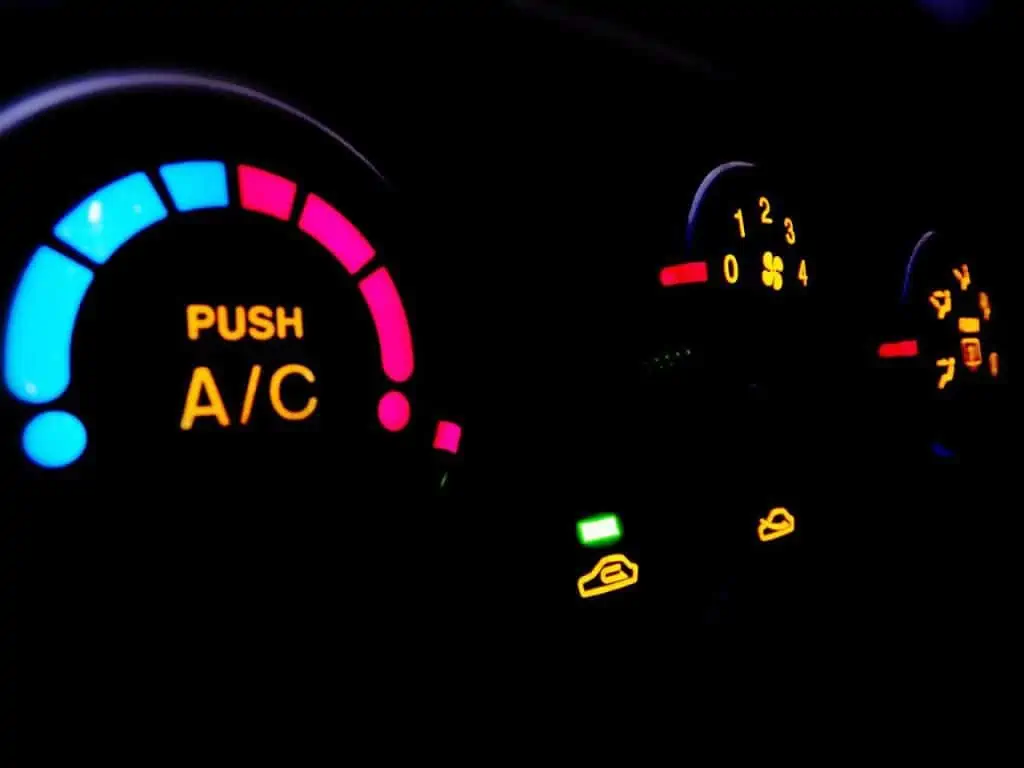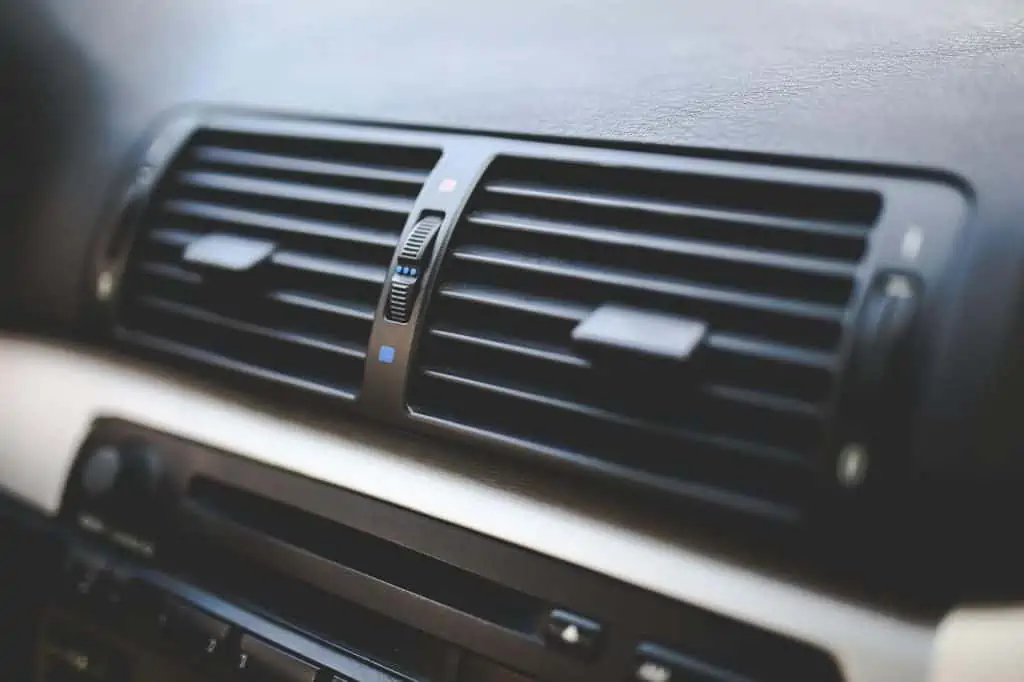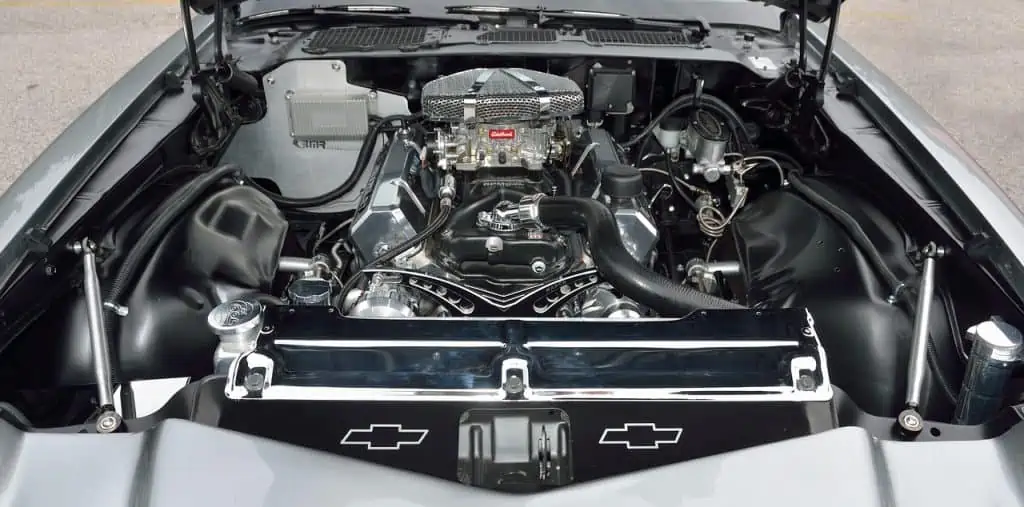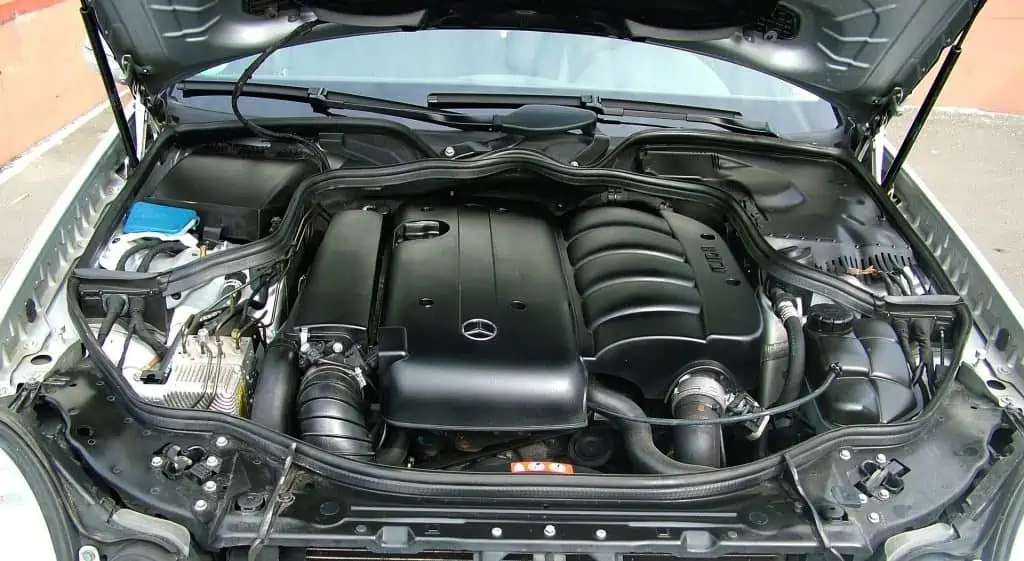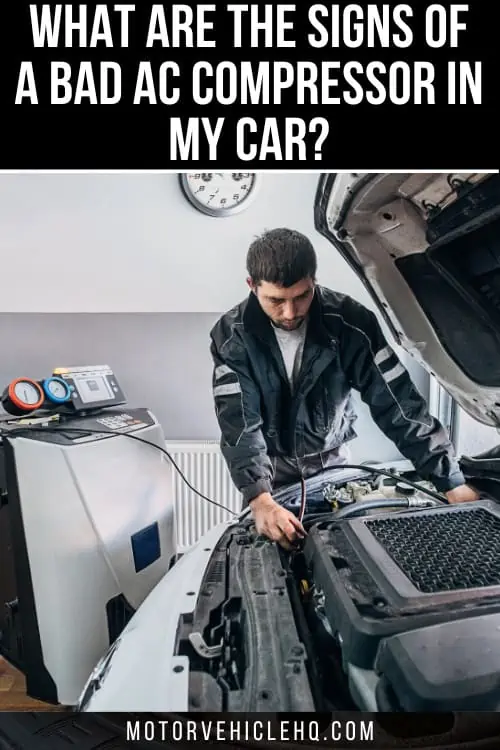Even though you can see the airflow from your car’s air conditioner, it is becoming hot now that summer has arrived. Unfortunately, the compressor in your air conditioner may stop producing chilly air.
A crucial part of your car’s air conditioning system is the AC compressor. It is crucial for pressurizing and maintaining the circulation of the air refrigerant so that your air conditioner runs as efficiently as possible.
Every vehicle’s air conditioning system relies on a constant supply of refrigerant to operate. This refrigerant enables the air conditioner to generate the cool air that emerges from the dashboard vents.
The AC compressor operates by repeatedly turning ON and OFF, which makes it vulnerable to wear and tear every time you turn it on.
The fact that the AC system has so many distinct components also implies that many of them might malfunction. It tends to wear down over time and has to be replaced, just like any mechanical part of your automobile.
Many automobile models have a history of AC compressor failure. The symptoms of a faulty ac compressor will appear when the car’s air conditioning system begins to wear out or fail, alerting the driver that it needs to be replaced.
A malfunction with the AC compressor will have a detrimental impact on the overall air conditioning system because it is responsible for pressurizing and circulating the AC refrigerant.
An AC compressor: What Is It?
An essential component of the car’s air conditioning system is the AC compressor. The heart of an AC system, according to many repairmen, is the AC compressor.
An air conditioning compressor, described simply, is a pump that generates heat by applying a great deal of pressure to the refrigerant used in air conditioning systems.
The reason the AC compressor is referred to as a pump is that both it and a pump can convey fluid through a pipe by increasing the pressure on the fluid. Since gases may be compressed, the compressor also reduces a gas’s volume.
Although certain liquids can be compressed, the primary function of a pump is to pressurize and move liquids. This is because liquids are largely incompressible.
Two ports, an inlet, and an outlet, often known as “suction” and “discharge,” respectively, make up the AC compressor. Always the bigger diameter hole, the suction port.
The compressor “sucks” the refrigerant in, compresses it, and “discharges” it via the output toward the condenser. There are several passages, valves, bearings, and other parts inside the compressor.
When your air conditioner stops producing cold air, how can you tell if the compressor is to blame? Let’s investigate! Let’s start by taking a brief look at the symptoms:
Warm or changing AC temperatures are the most typical sign of a faulty AC compressor. If you open the hood, the AC compressor may also make noises. In certain instances, the area around the compressor may also have refrigerant leaks.
Car Instrument Panel Air Conditioner Light
How Does an AC Compressor Work?
The compressor for your car’s air conditioning is the system’s vital organ. It functions as a small compressor and is often powered by your auxiliary drive belt. The pulley on your A/C compressor receives power from your crankshaft when your engine rotates over through the auxiliary drive belt.
Your A/C compressor has a clutch installed in the pulley since not everyone uses their A/C exclusively when driving. When you turn on and off your air conditioning, the compressor will be engaged and disengaged by this clutch. Therefore, if your air conditioner is turned off, the compressor’s pulley will turn but the compressor’s internal parts won’t.
The air conditioner compressor is made to raise the temperature and pressure of the refrigerant inside the system during cooling. When the gas-based refrigerant reaches the condenser of your car, the tightly packed molecules allow the heat that the refrigerant has absorbed from your evaporator to be released.
Where is the AC compressor Located In a Vehicle?
Usually, your air conditioner’s compressor is anywhere along the auxiliary drive belt. It will be powered by an electrical socket and have two refrigerant pipes attached to the body of the device.
You may look underneath your car to view the compressor because they are often found near the bottom of the engine, underneath the alternator and power steering pump.
What are the Signs of a Bad AC Compressor in My Car?
Since the signs of a faulty AC compressor are obvious to notice, determining if the AC compressor is bad is easier than you would have anticipated. When your car’s AC compressor is malfunctioning, you can experience the following symptoms.
You’ll have the fundamental information to diagnose your automobile by paying attention to these signs.
Warm Air Is Blown By the Air Conditioning System
This would appear like the list’s logical initial option. However, there are several indicators to watch out for that might indicate a broken compressor is to blame if your air conditioner stops operating.
If your car shows that your A/C should be on but you don’t experience a temperature difference, the car’s AC compressor may be malfunctioning. This is often indicated by a little light on the A/C button.
Examining the power feed for your A/C compressor is an excellent approach to determine if the problem is with it or not.
A 2-pin connector for the compressor is typically found on the outside of the body. You ought to have a live feed flowing to the pump when the car is operating and the air conditioning is turned on.
If your compressor has the proper feeds yet isn’t operating, it may have a bad A/C compressor.
AC Compressor Making Noise
As you can expect, the internals of the pump is working extremely hard to keep up with demand while the compressor’s clutch is engaged.

You’ll often start to hear a rough grinding sound coming from the engine after the bearings and other metallic components inside the compressor start to deteriorate and become noisy.
Try turning your air conditioner on and off, and listen for any variations in the grinding sounds to see whether your compressor is the source of the noise.
The internal parts of your compressor may have worn out and need to be changed if you find that the noise goes away when the pump is turned off.
The Clutch on the Compressor Is Not Moving
The majority of ac compressor pulleys are made of two pieces. The engine will always spin the inner pulley without rotating the axle into the compressor. This pulley also includes an outside clutch that engages when the AC compressor should turn on.
This clutch won’t engage and turn the compressor axle if it has failed. It must be carefully diagnosed since the compressor may also experience this if there is no electrical supply.
But rather than a defective AC compressor, this is more likely an indication of a bad AC compressor clutch. However, you frequently need to repair the compressor if the ac compressor clutch is damaged.
Most modern automobiles have variable AC compressors, which spin continuously and do not have this clutch.
The Engine Compartment Smells Like Burning Rubber
When you switch on the AC and smell burnt rubber coming from the engine bay, the AC compressor may be seized and the serpentine belt may not spin on the compressor pulley.
However, if you have been seeing it for a while, there is probably something else wrong with your automobile. This will make the serpentine belt snap off pretty soon.
Too Much Wear on the Auxiliary Drive Belt
It could be worthwhile inspecting your A/C compressor’s pulley if you recently had to replace your auxiliary drive belt and observed that your new one has started to wear out very rapidly or is creating a screaming noise.
The pulley on your compressor may acquire excessive bearing movement as it ages and operates at different angles due to the pulley’s bearings.
This motion frequently results in snatching and grasping of the rubber auxiliary drive belt, which hastens the belt’s premature wear. Or the excessive movement may cause the rubber belt to scrape against the misaligned pulley, emitting a high-pitched screech.
Remove the auxiliary drive belt from the A/C compressor and examine the pulley physically to see if there is any extra free play to establish whether you are to blame.
Unfortunately, this is rarely the case, and replacing a worn pulley will frequently necessitate replacing the compressor itself. Some compressors let their pulleys be changed without replacing the entire device.
Leak of Refrigerant
The air conditioning system in your car features sensors that measure how much refrigerant is in the pipes. Your lower pressure switch will recognize a leak on one of these lines in your car and turn off the compressor to prevent harm from the refrigerant running out.
Car Interior Air Conditioning BMW
Due to the components being out of reach, it can sometimes be challenging to locate a refrigerant leak on a car. But if you’re searching for a leak, the compressor body itself is a decent place to start.
If the compressor has started to over-compress the refrigerant because of an internal problem, this can result in an excessive buildup of heat and pressure inside the compressor’s body, which can lead to the seals bursting. resulting in the refrigerant’s release and the failure of your A/C.
Tripping the Circuit Breaker
If the exterior condensing unit on your car often trips the circuit, it probably has a bad or deteriorating compressor. This is due to the compressor overheating and consuming a lot of electricity, which trips the circuit breaker.
If your circuit breaker trips and you notice it, don’t keep resetting it and turning the system on. The circuit breaker is only carrying out its duty and preventing a fire from spreading to you and your car.
Defective Suction Lines
When your ac compressor malfunctions or is broken, heated airflow from your air vent might be caused by a blockage in your vehicle’s refrigerant line. Refrigerant lines must be unblocked by an HVAC specialist; however, if you have faith in your instincts, you can elect to replace the lines.
How Do I Diagnose the Signs of a Bad AC Compressor In My Car?
You might want to learn how to test a car ac compressor if you’ve noticed one or more of the above indicators of a malfunctioning AC compressor so you don’t wind up replacing a working compressor unit. Here are a few simple techniques to identify the aircon compressor in your automobile.
Step 1: Verify Temperature Variations
When your air conditioner is running, if you feel warm air coming from the vents, your compressor may be broken or subpar. Whether the AC is still operating, see if the temperature changes; if it does, this might be a sign that the ac compressor is failing.
Step 2: Examine for Physical Harm and Oil Leakage
Visually check the ac compressor in your car for leaks, physical damage, and corrosion. These symptoms point to a bad or failed automobile air conditioner compressor. Oil-leaking compressors won’t operate at their best and can fail early. As a result of friction brought on by the compressor leak, the air conditioning system will operate with irregular temperatures due to low oil in the compressor.
Step 3: Verify That the Clutch Can Rotate Freely
Check the AC compressor clutch to make sure it isn’t difficult to turn or generate a grinding noise. The clutch ought should rotate easily. Your compressor unit may get completely damaged by a bad clutch.
Step 4: Keep an Ear Out for Skipping and Squealing Sounds
Start the engine, set the AC to the coolest setting, and crank the fan up. Check to see if the compressor unit engages by opening the hood and paying particular attention to the compressor clutch. Squealing and skipping noises might be caused by a bad compressor unit that fails to activate.
Substitute Technology Equipment Alternator Workshop
Step 5: Verify for Any Leaks of the Refrigerant
Your car’s AC refrigerant should be intact and not leaking for any reason, and the Freon level shouldn’t be low. Low Freon levels indicate an AC system leak, which you should locate and repair. An electrical AC refrigerant detector may be used to quickly locate refrigerant leaks.
How is an AC compressor replaced?
As its name suggests, the AC compressor circulates the refrigerant inside the air conditioning system by compressing the gas to a high vehicle AC pressure. If your air conditioner doesn’t have a compressor, the refrigerant won’t flow through the system, and your air vents won’t blow cold air. Without further ado, let’s begin discussing how to replace the car’s air conditioning compressor.
Materials and tools required to perform the task include:
- A Thread lock
- The Screwdriver drivers
- The Pliers
- A Ratchet handle
- A Universal joint socket
- The Wrenches
- The Socket sets
- A Clean rag
- The Compressor oil
- The Refrigerant
- The Cup bolts
Step 1: Detaching Your Compressor Unit from Your Car’s Engine Bay
First, disconnect the negative connection of your battery to prevent an electrical shock or short circuit. To access the serpentine belt, remove any covering from your engine.
The belt will easily come off if you use the proper tool from your mechanic toolbox to pry the belt tensioner. Find and detach each tube and hose on the compressor.
Depending on the type of your car, other parts or accessories can be in the way of the compressor. By releasing and disconnecting the fasteners and wirings, you may remove these components by grabbing the appropriate wrenches.
Make sure to have a cup bolt where you can store all the connections and bolts you took out of the engine. On the compressor, find the high and low-pressure lines, and then remove the fittings’ bolts. To prevent grit and grime from getting into the hole, seal off the ends of the refrigerant lines with a clean piece of cloth.
With your flathead screwdriver, find the electrical connector on the car’s AC compressor unit, and pull it off. It’s now time to use the proper sockets and ratchet handle to tighten the lower and top mounting bolts.
To remove the mounting bolts, you might also require a universal joint socket. All the bolts must first be broken free before being loosened. To avoid endangering the compressor or yourself, you must hold the AC compressor unit in place while removing the last bolt.
Step 2: Examining the Outdated Compressor
Before discarding the old compressor unit, it must be inspected. You will discover why it failed by doing this. When rotating the compressor clutch, if you hear grinding, it means there are metal shavings that need to be immediately flushed out.
Unblock the orifice tube or expansion valve by purchasing an air conditioning flush kit from any trustworthy or nearby retailer. Check for metal shavings and clean the refrigerant lines and exhaust ports. If the orifice tube appears to be completely clogged, you might need to replace it.
Car Engine Motor Vehicle auto automobile
Step 3: Gaining Access to the New Air Conditioning Compressor
Access the old and new compressor units by bringing them close together. Since there are several AC compressor manufacturers, they could have somewhat different designs, but the installation procedure should be the same.
The intake and exhaust ports must match. Verify the AC clutch’s rib count and outside diameter. Check the old compressor for any accessories that aren’t on the new one and move them.
Whether there isn’t already oil in the new compressor, check the user manual to see if it has been added; if not, add the required quantity. Clean the old bolts with a wire brush, apply thread lock if desired, and then install the bolts on the new compressor.
Step 4: Changing the O Rings
O rings are used to guarantee that there are no refrigerant leaks in the high- and low-pressure refrigerant lines of the compressors. To avoid refrigerant leaks, you must replace the seals when you repair your vehicle’s aircon compressor.
Go over to the high and low refrigerant lines, replace the old seals with new ones, and massage some oil into them. The refrigerant lines and the new o rings should be compatible. Do you wish to continue without changing the worn-out o ring? That is a bad idea since it could lead to refrigerant leakage.
Step 5: Putting the New AC Compressor In Place
Place the replacement compressor on top of the one you just removed in the engine bay. By hand, secure the compressor and the bolts, and then use sockets or wrenches to twist the bolts.
Remove the obstruction on the high and low refrigerant lines, install them, and make sure both are well fastened. Install every piece of equipment you previously removed, including the electrical connector, serpentine belt, and whatever part you have to remove to get to the compressor unit.
Filling the refrigerant into the AC system is the last procedure.
How Much Is the AC Compressor Replacement Cost?
Depending on the car type and labor costs, the typical cost to repair an AC compressor ranges from $400 to $1200. While labor costs $200 to $500, an AC compressor ranges in price from $200 to $700.
Since the AC compressor is a somewhat sophisticated component, replacing one may be expensive.
Depending on the automobile type, the labor expenses for only replacing the AC compressor are frequently around $100.
However, the AC system has to be recharged following the AC compressor replacement, which typically costs between $100 and $200. Before replenishing the AC system, you must also do a leak test on the system, which may be time-consuming and expensive in terms of manpower.
Your vehicle’s refrigerant, the type of compressor installed, and how easily it can be changed can all affect how much it will cost to replace your A/C compressor.
How Long Should a Car Air Conditioning Compressor Last?
You might not give it a second thought as long as you like your driving experience and your car is performing at its best if you don’t need to know how the parts and accessories in the engine compartment function.
Automobile Engine Compartment Mercedes engine
It is challenging to estimate the AC compressor’s lifespan since the AC system is made up of so many air conditioning components.
The answer is based on your age and how frequently you use the a/c in your automobile. The AC compressor in your automobile will begin to fail as soon as you drive it for a while. Your AC compressor should last 8 to 12 years, nevertheless.
In Conclusion
The next step is to conduct a car ac compressor diagnosis if you suspect the AC compressor is the cause of the symptoms you’ve seen. It may be expensive and time-consuming to replace a car’s air conditioning compressor on your own.
Whether or if you wish to replace the AC compressor yourself is entirely up to you. The truth is that it may get really hot throughout the summer. You might not want to try driving while perspiring on a humid afternoon.


Nyangano Maurice specializes in vehicle troubleshooting and has more than 10 years of experience in the automobile industry. Over many years of experience as a car mechanic, he has acquired a broad range of skills, including engine repair, brake systems, electrical systems, and more. He frequently hosts community workshops and training programs to help motor vehicle owners understand their vehicles better.
